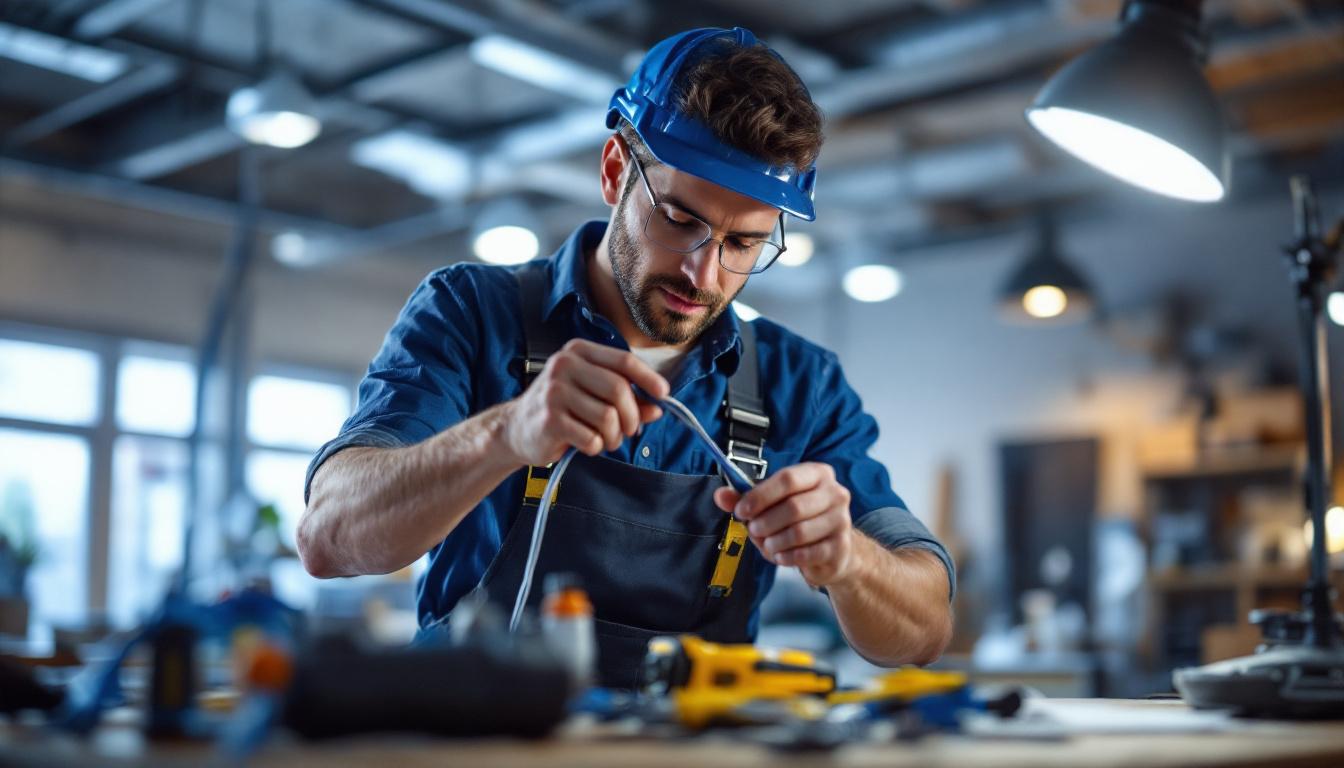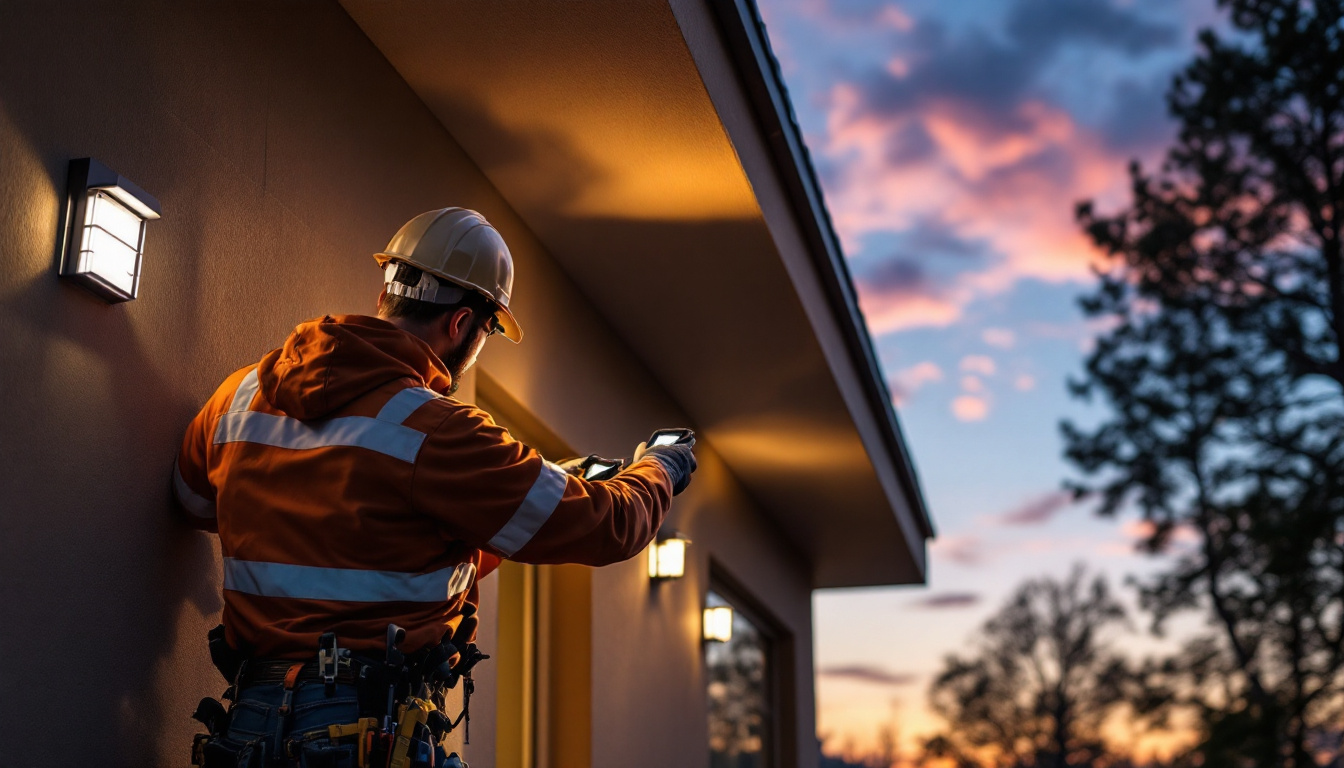
Wire connectors play a crucial role in the installation and maintenance of lighting systems. They ensure that electrical connections are secure, reliable, and safe. However, the question of whether a wire connector can be used for multiple lights often arises among lighting contractors. This article aims to clarify this issue and provide practical advice to avoid common pitfalls.
Wire connectors, also known as wire nuts or twist-on connectors, are designed to join two or more electrical wires together. They come in various sizes and types, suitable for different applications. understanding the specifications of these connectors is essential for ensuring a safe and effective lighting installation.
Typically, wire connectors are rated for a specific number of wires based on their size and the gauge of the wires being connected. using the right connector for the job not only enhances safety but also improves the longevity of the lighting system. For instance, using a connector that is too small can lead to overheating and potential failure, while an oversized connector may not provide a secure fit, leading to loose connections.
There are several types of wire connectors available, each suited for different applications. The most common types include:
Choosing the right type of connector is vital for ensuring that the lighting system operates efficiently and safely. Additionally, it’s important to consider the environmental conditions where the connectors will be used. For example, connectors used in damp or outdoor environments should be rated for moisture resistance to prevent corrosion and ensure long-term reliability. Furthermore, some connectors come with built-in features such as insulation or sealing compounds that enhance their performance in challenging conditions.
Another aspect to consider is the ease of installation. While some connectors may offer superior performance, they might also require specialized tools or skills to install properly. For instance, push-in connectors are often favored for their simplicity, allowing even novice DIYers to achieve a secure connection without extensive electrical knowledge. On the other hand, twist-on connectors might require a bit more finesse to ensure that the wires are adequately twisted and secured, which can be a learning curve for those new to electrical work.
The short answer is yes, wire connectors can be used for multiple lights, but there are important considerations to keep in mind. The ability to connect multiple fixtures depends on the type of connector used, the total load on the circuit, and the gauge of the wiring involved.
One of the most critical factors when using wire connectors for multiple lights is ensuring that the total load does not exceed the connector’s capacity. Each connector has a specified load limit, which should not be surpassed. Exceeding this limit can lead to overheating, potential fire hazards, and failure of the lighting system.
Contractors must calculate the total wattage of all connected fixtures and ensure that it aligns with the electrical circuit’s capacity. This involves understanding the wattage ratings of the light bulbs being used and the overall circuit load. For instance, if you are using LED bulbs, which typically consume less wattage than incandescent bulbs, you may be able to connect more fixtures without exceeding the circuit’s capacity. However, it’s always prudent to leave a safety margin to accommodate any unexpected increases in load or power surges.
Another vital aspect to consider is the wire gauge. The gauge of the wire must be compatible with the wire connectors being used. Thicker wires can handle more current but may not fit into smaller connectors designed for thinner wires. Conversely, using a connector designed for thicker wires with thinner wires can lead to poor connections.
It is essential to follow the manufacturer’s specifications for both the wire and the connector to ensure a secure and safe connection. Additionally, the type of wire insulation can also play a role in compatibility. For example, some connectors may not be suitable for use with certain types of insulated wires, such as those with PVC versus those with thermoplastic insulation. Always check the ratings and compatibility to avoid issues down the line. Proper installation techniques, such as twisting wires securely and ensuring that no bare wire is exposed, further enhance the reliability of the connections made with wire connectors.
To avoid issues when using wire connectors for multiple lights, contractors should adhere to several best practices. These guidelines can help ensure that installations are safe, efficient, and compliant with electrical codes.
Compliance with local electrical codes and regulations is paramount. These codes are designed to ensure safety and reliability in electrical installations. Familiarizing oneself with these codes can prevent costly mistakes and enhance the safety of the lighting system.
Contractors should also stay updated on any changes to regulations that may affect their work, ensuring that all installations meet the latest standards. This can involve attending workshops or training sessions, as well as subscribing to relevant industry publications. By being proactive about education, contractors can not only avoid legal issues but also position themselves as knowledgeable professionals in their field.
Investing in high-quality wire connectors can make a significant difference in the performance of a lighting system. Cheap connectors may save money initially but can lead to problems down the line, such as poor connections and increased risk of failure.
Choosing connectors from reputable manufacturers ensures that they meet safety standards and are designed for the specific applications required in lighting installations. Additionally, it is beneficial to consider the environmental conditions in which the connectors will be used. For instance, connectors that are rated for outdoor use may have features such as UV resistance and waterproofing, which can significantly extend the lifespan of the installation.
Regular inspections of electrical connections are essential for maintaining the safety and efficiency of lighting systems. Over time, connections can loosen or corrode, leading to potential hazards. Contractors should schedule routine checks to ensure that all wire connectors are secure and functioning correctly.
During these inspections, it is also advisable to check for any signs of overheating or damage, which could indicate underlying issues that need to be addressed promptly. Moreover, documenting these inspections can provide valuable insights over time, helping contractors to identify patterns or recurring issues that may require more in-depth solutions. Keeping a log of maintenance activities not only aids in troubleshooting but also demonstrates a commitment to quality and safety to clients.
Even experienced lighting contractors can fall victim to common mistakes when using wire connectors for multiple lights. Awareness of these pitfalls can help prevent issues that may arise during installations.
One of the most frequent mistakes is overloading wire connectors by connecting too many wires or exceeding the load capacity. This can lead to overheating and potential fire hazards. Contractors must always adhere to the load limits specified by the connector manufacturer.
To avoid this, it is advisable to use multiple connectors if necessary, distributing the load evenly across them to ensure safety and reliability. Additionally, it is beneficial to regularly check the connections during routine maintenance to identify any signs of wear or overheating, which can be indicative of overloaded connectors.
Improper stripping of wires can lead to poor connections and increased resistance. When preparing wires for connection, it is essential to strip the insulation correctly, ensuring that enough copper is exposed for a secure connection without leaving too much bare wire exposed.
Using the right tools and techniques for stripping wires can significantly enhance the quality of the connections and the overall performance of the lighting system. For instance, using a wire stripper that matches the gauge of the wire can prevent damage to the conductor and ensure a clean cut. Furthermore, contractors should be mindful of the environment in which they are working; for example, moisture or dirt can compromise connections, making proper stripping even more critical.
Each wire connector comes with specific manufacturer instructions regarding its use, including the number of wires it can accommodate and the appropriate wire gauge. Ignoring these instructions can lead to improper connections and potential safety hazards.
Contractors should always read and follow the manufacturer’s guidelines to ensure that installations are safe and compliant with industry standards. Additionally, familiarizing oneself with the different types of connectors available can aid in selecting the right one for the job. For example, some connectors are designed for specific applications, such as outdoor use or high-voltage systems, and using the wrong type can lead to premature failure or safety risks. Keeping abreast of the latest advancements in connector technology can also provide insights into more efficient and safer installation practices.
Using wire connectors for multiple lights is a common practice among lighting contractors, but it requires careful consideration and adherence to best practices. By understanding the specifications of wire connectors, load capacities, and proper installation techniques, contractors can avoid common pitfalls and ensure that their lighting systems are both safe and efficient.
Staying informed about electrical codes, using quality materials, and performing regular inspections are essential steps in maintaining the integrity of lighting installations. By following these guidelines, lighting contractors can enhance their reputation for quality work and ensure the satisfaction of their clients.
Ready to elevate your lighting installations with the highest quality connectors and lighting products? Look no further than LumenWholesale. Our commitment to providing spec-grade lighting solutions at wholesale prices ensures that you can tackle any project with confidence. With our direct-to-contractor approach, you’ll enjoy superior products without the inflated markups often found at local distributors. Plus, with free shipping on bulk orders, you can stock up on everything you need while keeping costs low. Don’t compromise on quality or value—visit LumenWholesale today and discover the perfect blend of quality, affordability, and convenience for all your lighting needs.

Discover how electrical pigtail cords can enhance efficiency and safety for lighting contractors.

Discover how Mogul Base LED lighting transforms projects for contractors—boost efficiency, reduce costs, and enhance durability.

Discover the frequent pitfalls lighting contractors face when installing exterior emergency lights.

Discover how Satco Products can transform your lighting projects with their innovative solutions and extensive range.